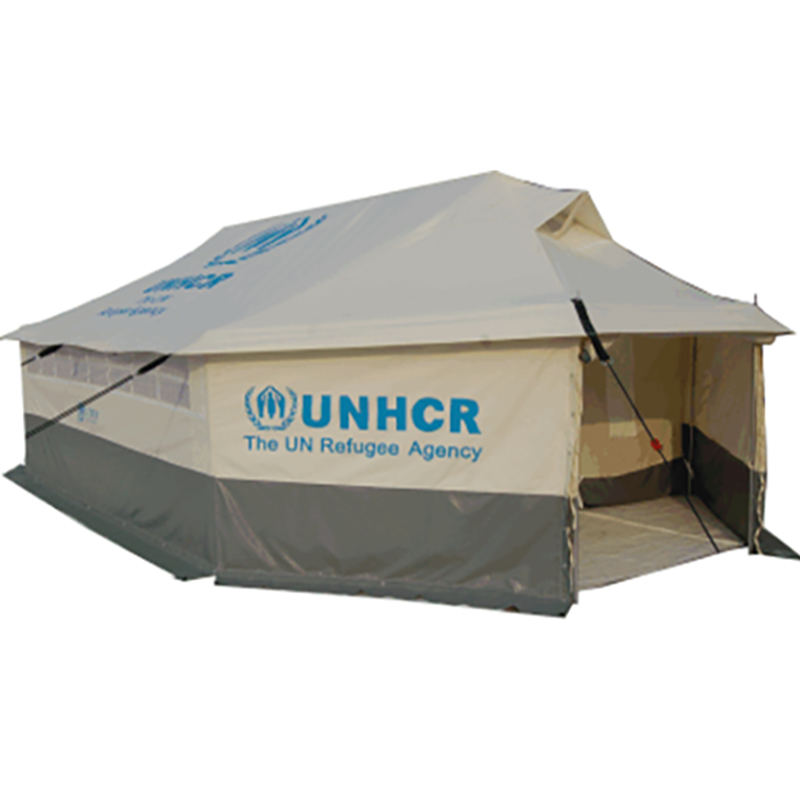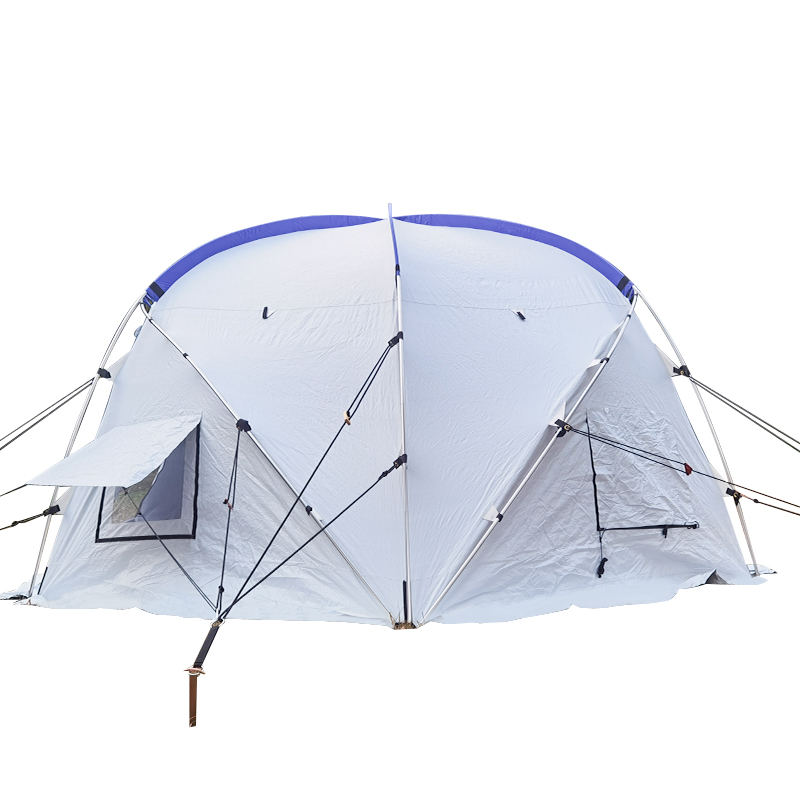Our story is about how to uphold the spirit of humanitarianism in the face of disaster, how to find solutions amidst challenges, and how to sow hope in despair.
Web Menu
Product Search
Exit Menu
Save half the money than a traditional warehouse? Why has warehouse tent become a new choice for enterprises?
Posted by Admin | 14 Nov
Content
- 1 What Cost Advantages Make Warehouse Tents More Economical Than Traditional Warehouses?
- 2 What Structural Features Enable Warehouse Tents to Meet Enterprise Storage Needs?
- 3 How Do Warehouse Tents Adapt to the Dynamic Storage Needs of Enterprises?
- 4 What Application Scenarios Make Warehouse Tents a Practical Choice for Enterprises?
- 5 What Environmental and Policy Advantages Do Warehouse Tents Have?
- 6 What Misconceptions Do Enterprises Have About Warehouse Tents, and How to Clarify Them?
What Cost Advantages Make Warehouse Tents More Economical Than Traditional Warehouses?
The core appeal of warehouse tents lies in their significant cost savings, which can reach up to 50% compared to traditional brick-and-mortar warehouses. First, the construction cost is far lower—warehouse tents adopt modular designs with lightweight but high-strength frames (such as aluminum alloy or galvanized steel) and durable covers (like PVC canvas), eliminating the need for expensive foundation pouring, bricklaying, or concrete construction. Second, the construction cycle is shortened from months to weeks or even days, reducing labor costs and allowing enterprises to put the warehouse into use quickly, minimizing the opportunity cost of waiting. Additionally, long-term maintenance costs are lower: the detachable structure simplifies repairs and replacements of damaged parts, and the corrosion-resistant materials reduce the need for regular painting or structural reinforcement required by traditional warehouses. For temporary storage needs or enterprises with tight budgets, these cost advantages are decisive.
What Structural Features Enable Warehouse Tents to Meet Enterprise Storage Needs?
Despite their lower cost, warehouse tents do not compromise on storage functionality, thanks to their advanced structural design. The frame structure uses high-strength materials with strong load-bearing capacity, supporting spans of up to tens of meters without internal columns, maximizing usable space and facilitating the storage of large equipment, bulk goods, or palletized cargo. The covering materials (often high-quality PVC canvas) are waterproof, UV-resistant, windproof, and tear-resistant, effectively protecting goods from harsh weather conditions such as rain, snow, and strong sunlight. Many warehouse tents also support customization, such as adding insulation layers for temperature-sensitive goods, installing ventilation systems to prevent moisture buildup, or equipping rolling doors and loading docks for convenient cargo handling. The structural stability has been verified through wind load and snow load tests, ensuring safe use in most regions.

How Do Warehouse Tents Adapt to the Dynamic Storage Needs of Enterprises?
In an era of volatile market demand, the flexibility of warehouse tents has become a key advantage for enterprises. Unlike traditional warehouses with fixed locations and sizes, warehouse tents are detachable and movable—if the enterprise relocates or adjusts its storage location, the tent can be disassembled, transported, and reassembled elsewhere, avoiding the waste of fixed assets. For seasonal industries (such as agriculture, logistics during peak shopping seasons), warehouse tents can be quickly expanded to increase storage space during peak periods and disassembled or reduced in size during off-peak periods, reducing idle costs. Moreover, the modular design allows for easy expansion by adding additional tent units, enabling enterprises to adjust the storage area according to business growth without large-scale reconstruction. This "on-demand configuration" model perfectly matches the dynamic storage needs of modern enterprises.
What Application Scenarios Make Warehouse Tents a Practical Choice for Enterprises?
Warehouse tents have been widely used in various enterprise scenarios due to their versatility. In logistics and transportation, they serve as temporary transit warehouses, reducing the cost of renting permanent warehouses in high-demand areas. For manufacturing enterprises, they are used to store raw materials, semi-finished products, or finished goods, especially when production lines are expanded temporarily. In the construction industry, they function as on-site material storage sheds, protecting construction materials from weather damage and improving construction efficiency. Agricultural enterprises use them for storing grain, fruits, and vegetables, with optional insulation and ventilation systems to extend the shelf life of agricultural products. Additionally, they can be converted into temporary workshops, exhibition halls, or emergency storage spaces during disasters, demonstrating strong scenario adaptability.
What Environmental and Policy Advantages Do Warehouse Tents Have?
The environmental friendliness of warehouse tents aligns with the global trend of sustainable development, winning favor from enterprises and relevant policies. The construction process of warehouse tents generates little waste, and most materials (such as aluminum alloy frames and PVC canvas) are recyclable, reducing environmental impact compared to traditional warehouses that consume a large amount of concrete and steel. In many regions, temporary buildings like warehouse tents are exempt from complex approval procedures for permanent construction, shortening the time from planning to use. Some local governments even encourage the use of energy-saving and environmentally friendly temporary storage facilities, providing certain policy support or tax incentives. For enterprises pursuing green development and hoping to simplify approval processes, warehouse tents offer additional advantages.
What Misconceptions Do Enterprises Have About Warehouse Tents, and How to Clarify Them?
Despite their many advantages, some enterprises still hold misconceptions about warehouse tents, hindering their adoption. One common misconception is that "low cost means poor quality"—in fact, reputable warehouse tents undergo strict quality testing, with structural stability and material durability meeting industry standards, and their service life can reach 10-20 years with proper maintenance. Another misconception is that "they are only suitable for temporary use"—while they excel at temporary storage, many enterprises use them as long-term storage facilities by choosing high-quality materials and adding necessary functional configurations. Additionally, some worry about "insufficient safety"—but with windproof, snowproof, and fire-retardant designs (optional fire-retardant materials), warehouse tents can meet safety requirements for general storage. Clarifying these misconceptions helps enterprises recognize the practical value of warehouse tents.
Related Products
- Cell Phone:+86 15695147631
- Cell Phone:+86 18630605111
-
Email:
[email protected]
[email protected]
[email protected] - Add:No.9 Kangmin Road, Automobile industry Park, Yizheng City, Jiangsu Province, China
Copyright © Yangzhou Mailenda Outdoor Products Co., Ltd.
All Rights Reserved.
Custom Tent OEM/ODM Manufacturers

- Privacy Statement
- Terms & Conditions
- Sitemap


 English
English 中文简体
中文简体 Español
Español 日本語
日本語 русский
русский عربى
عربى






